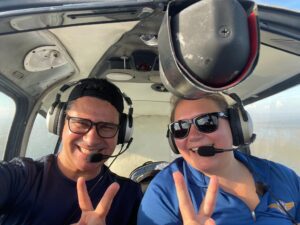Experience the Skies for Free This Saturday and be Ready to take your dreams to new heights. Circle April 27th on your calendar because the Florida Goldcoast Ninety-Nines are hosting a Let’s Fly Now! event at Homestead airport (X51) in Homestead, FL. This thrilling opportunity invites new and aspiring pilots of all ages to experience the magic of flight firsthand, completely free of charge. 
Empowering Tomorrow’s Aviators
Let’s Fly Now! isn’t just about flying; it’s about empowerment and breaking down barriers. While our focus is on females of flying age, our event welcomes everyone with a passion for aviation. This signature introductory flight program, launched by the Ninety-Nines in 2018, aims to inspire and educate the next generation of aviators.
Generous Support and Exciting Partnerships
Thanks to the generosity of Ninety-Nines, Friends of The Ninety-Nines, and certified pilots, we can offer this unique opportunity with all expenses covered. But wait, there’s more! King Schools and Dare to Fly have joined forces with us, providing free online programs, significant discounts on pilot courses, and special gifts to kickstart your aviation journey plus you get to Experience the Skies For Free!
How to Join the Adventure
Ready to take flight? Registering for this unforgettable experience is as easy as navigating to our website and following the provided instructions. Select your preferred time slot, and get ready to embark on an unforgettable journey through the skies. Whether you’re an experienced pilot or stepping foot into a cockpit for the first time, we promise an experience that will stay with you forever. Register Here To Attend This Saturday 4-27-24

Volunteer and Spread Your Wings
Behind every successful flight is a team of dedicated volunteers and volunteer pilots. If you’re a licensed pilot eager to share your love of flying or if you’d like to lend a hand on the ground, we’d love to have you on board. Visit our website to sign up and be a part of this incredible initiative. To volunteer as a pilot, you must possess at least a Private Pilot’s license and valid Medical Certificate.
First 1) visit Here to Register as a Pilot and click on “Register as a Pilot”, to ensure you are properly registered with the Ninety-Nines as a pilot, selecting the Florida Goldcoast chapter as the participating chapter you’ll be volunteering for. Then, 2) email Myra Bugbee at mjbugbee1@gmail.com to notify her know of your registration and interest. Be sure to check any provided contact method, and ensure timely responses to our organizers, who will reach out to review the coming event with you.
Join Us in Homestead, FL
Don’t miss out on this incredible opportunity to soar above Homestead, FL, on April 27th. Whether you’re a seasoned pilot or an aviation enthusiast, we invite you to join us at the Homestead airport to experience the skies and discover the thrill of flight firsthand. We can’t wait to welcome you to the world of aviation and show you the endless possibilities that await.
Fly High with EmptyLegs.net
At EmptyLegs.net, we’re passionate about making aviation accessible to everyone. Stay tuned for more exciting updates, events, and opportunities to explore the skies. Until then, Remember to Be Social, Fly Private!

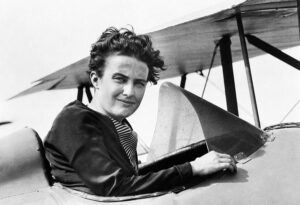 The name Helen Richey stands as a testament to courage, perseverance, and the indomitable spirit of women in the early days of flight. Despite the numerous obstacles she faced, Helen Richey not only became a famous female aviator but also paved the way for countless women to follow in her footsteps. In this blog post, we will delve into the inspiring life and accomplishments of Helen Richey, a trailblazer in the world of aviation.
The name Helen Richey stands as a testament to courage, perseverance, and the indomitable spirit of women in the early days of flight. Despite the numerous obstacles she faced, Helen Richey not only became a famous female aviator but also paved the way for countless women to follow in her footsteps. In this blog post, we will delve into the inspiring life and accomplishments of Helen Richey, a trailblazer in the world of aviation.
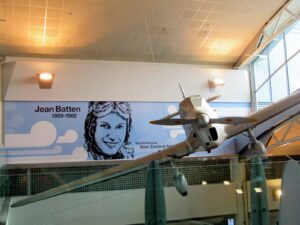

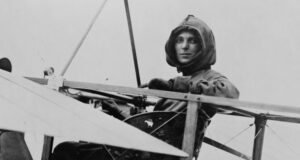
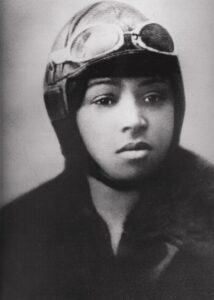
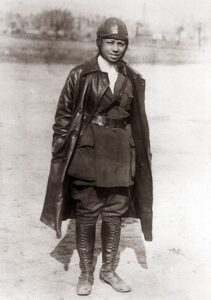 Bessie Coleman: Barnstorming and Breaking Barriers
Bessie Coleman: Barnstorming and Breaking Barriers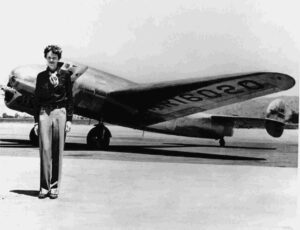
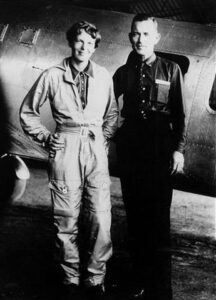
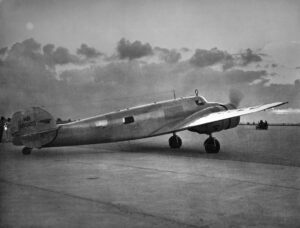
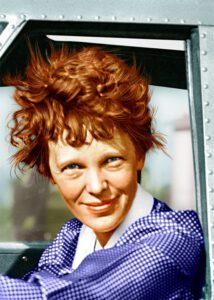 Amelia Earhart, the skybound trailblazer and her love for the sky began as a flicker, a tiny flame that grew into an insatiable passion. Born in 1897, she was a woman of extraordinary determination and courage, determined to defy the constraints of her era and make her mark in the world of aviation.
Amelia Earhart, the skybound trailblazer and her love for the sky began as a flicker, a tiny flame that grew into an insatiable passion. Born in 1897, she was a woman of extraordinary determination and courage, determined to defy the constraints of her era and make her mark in the world of aviation. 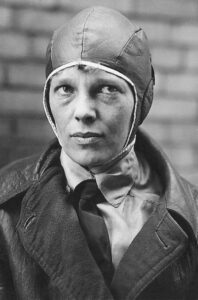 The Call That Changes The Course Of Her Life
The Call That Changes The Course Of Her Life
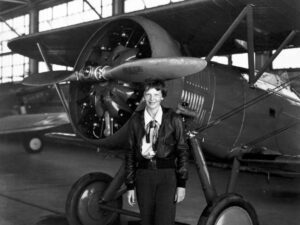 Amelia Earhart: The Trailblazer of Female Aviation: When we think about pioneers in aviation, names like the Wright brothers or Charles Lindbergh might immediately come to mind. But, soaring alongside them in the annals of aviation history is Amelia Earhart, an icon who not only defied the gravitational pull of the Earth but also the societal expectations of her time. Beyond her tangible accomplishments, Earhart’s legacy is marked by her undying spirit, determination, and her influence on women in aviation.
Amelia Earhart: The Trailblazer of Female Aviation: When we think about pioneers in aviation, names like the Wright brothers or Charles Lindbergh might immediately come to mind. But, soaring alongside them in the annals of aviation history is Amelia Earhart, an icon who not only defied the gravitational pull of the Earth but also the societal expectations of her time. Beyond her tangible accomplishments, Earhart’s legacy is marked by her undying spirit, determination, and her influence on women in aviation.